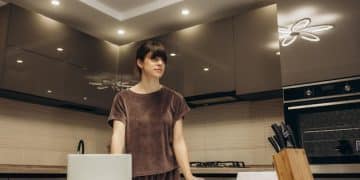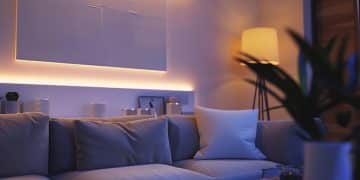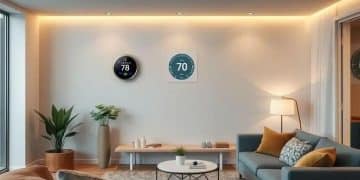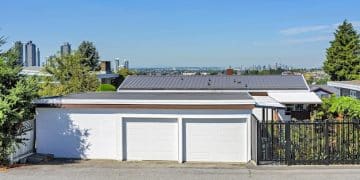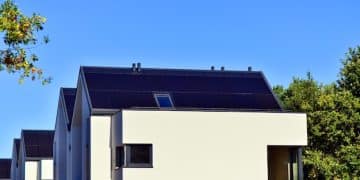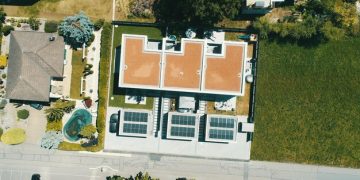Led lighting for lower energy bills: a practical guide

Switching to LED lighting significantly reduces energy bills due to its energy efficiency, longer lifespan, and lower maintenance costs, making it a smart choice for cost savings and environmental benefits.
Led lighting for lower energy bills is becoming an essential topic for homeowners looking to save costs. But have you ever thought about the actual savings you might achieve by making the switch? Let’s dive into this energy-efficient solution!
Understanding the benefits of led lighting
Understanding the benefits of led lighting is crucial for anyone looking to make smarter energy choices. These lights not only brighten up your space but can also lead to significant savings on your electricity bills.
Energy Efficiency
One of the most remarkable advantages of led lighting is its energy efficiency. Unlike traditional bulbs, leds use a fraction of the energy. This means you not only help the environment but also reduce your energy costs.
Long Lifespan
Another great aspect is their long lifespan. LED lights can last up to 25 times longer than incandescent bulbs, which means less frequent replacements. This further contributes to cost savings and less waste.
- Lower energy consumption
- Increased durability
- Less frequent replacements
Additionally, led lighting offers better durability than traditional options. This means they can withstand shocks and vibrations, making them perfect for various settings. They also emit less heat compared to traditional bulbs, making your environment safer.
Environmentally Friendly
Furthermore, led lights are more environmentally friendly, as they do not contain harmful substances like mercury, which is found in some other types of bulbs. Choosing led lighting helps protect our planet, one bulb at a time.
How led lights can reduce your energy bills

How led lights can reduce your energy bills is a significant question for many homeowners. By switching to led technology, you can make a noticeable impact on your monthly expenses.
Lower Power Consumption
One of the primary reasons led lights are so effective is their lower power consumption. Unlike traditional bulbs, which waste energy by producing heat, leds convert most of their energy into light. This efficiency directly translates to lower electricity bills.
Longer Lifespan
Additionally, led lights have a much longer lifespan compared to other types. With many leds lasting up to 25,000 hours or more, you’ll replace them far less frequently. This saves you money not only on replacements but also on installation costs over time.
- Reduced energy usage
- Less frequent replacements
- Lower maintenance costs
Moreover, using led lights can also lead to savings on cooling costs. Because they emit significantly less heat, your air conditioning system doesn’t have to work as hard to keep your home cool, adding to the overall savings on your utility bills.
Smart Controls
Incorporating smart technology with your led lights further enhances savings. Smart lighting solutions allow you to control your lights remotely or set timers, ensuring that lights are only on when needed, maximizing energy efficiency.
Best practices for switching to led lighting
Switching to led lighting is a smart move for both your wallet and the environment. However, it’s essential to follow best practices to maximize the benefits of this change.
Analyze Your Current Lighting
Start by analyzing your current lighting setup. Identify the areas where you use the most energy-intensive bulbs. This will help you prioritize which lights to switch first. Consider the wattage and luminosity of your existing bulbs when making this evaluation.
Choose the Right LED Bulbs
When replacing your old bulbs, select the right led bulbs that match your needs. Look for brightness, color temperature, and compatibility with dimmers. The right bulb can improve the ambiance of your space while ensuring energy efficiency.
- Check wattage equivalent
- Consider color temperature
- Evaluate dimmable options
Make sure to consider your usage patterns. If you have lights that are on frequently throughout the day, switching them to leds can yield immediate savings. Also, installing led lights in outdoor areas can enhance safety and visibility.
Gradual Replacement
Instead of replacing all your bulbs at once, think about a gradual replacement strategy. This way, you can spread out costs and monitor the benefits over time. Start with frequently used rooms like the kitchen and living area, then move to bedrooms and less-used spaces.
Utilize Smart Technology
Integrating smart lighting controls with your led lighting can further enhance energy savings. This technology allows you to set schedules, adjust brightness levels, and control your lights remotely. Utilizing these features ensures you use led lights only when necessary, maximizing efficiency.
Common misconceptions about led lighting

Many people still hold misconceptions about led lighting that can prevent them from making the switch. Understanding these myths can help you see the benefits of making the change to more energy-efficient lighting.
Myth: LED Lights Are Too Expensive
One common misconception is that led lights are too expensive. While the initial cost may be higher than traditional bulbs, the long-term savings on energy bills and replacements make them much more economical.
Myth: LED Lights Are Not Bright Enough
Another myth is that leds do not provide sufficient brightness. In reality, led lighting offers a range of brightness levels and can be used in various settings. You can find led bulbs that emit light comparable to traditional incandescent bulbs.
- Available in various wattages
- Different color temperatures
- Suitable for all types of fixtures
Additionally, many people think that switching to led lighting will lead to a cold, harsh light. However, leds come in many color temperatures, allowing you to create a warm and inviting atmosphere in your home.
Myth: LEDs Contain Harmful Chemicals
Some believe that led lights contain harmful substances like mercury, commonly found in fluorescent bulbs. The truth is that leds are completely free of hazardous materials, making them a safer choice for your home.
FAQ – Common Questions About LED Lighting
What are the main benefits of LED lighting?
LED lighting is energy-efficient, has a long lifespan, and can reduce your electricity bills significantly.
Do LED lights really last longer than traditional bulbs?
Yes, LED lights can last up to 25,000 hours or more, much longer than incandescent or fluorescent bulbs.
Are there any health risks associated with LED lights?
No, LED lights are generally safe and do not contain harmful substances like mercury, unlike some other types of bulbs.
Can I replace all my bulbs with LED lights at once?
While it’s possible, a gradual replacement strategy may help spread out costs and maximize benefits.
